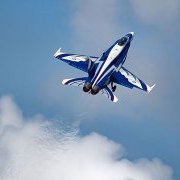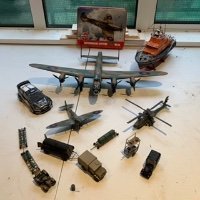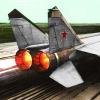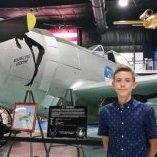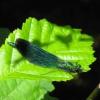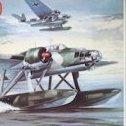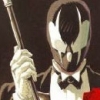Search the Community
Showing results for tags 'weathering'.
-
I'm planning to do an Arma Hurricane, a II in 48th if that is what the reference photo I choose to follow is, or 72nd if the chosen reference photo is a Mk.I, IID, etc. The aim of the project is to challenge myself to do some very rough bits of weathering, as realistically as possible using techniques include chipping, burnishing, different sheens (eg contrast between matte exhaust streaks and burnished paint/engine cowl areas), and other techniques made possible with the Mission Models Paints/ATOM combination. I'm open for any unusual schemes that bring forward unique weathering ideas, eg a desert scheme repainted, dark grey/nightfighter schemes chipping back to show black/original colours etc as well as any field applied areas, and any prominent grime/dust areas on the wings. The photos I've attached below are the 'juciest' I've come across in terms of weathering so far, but I'm sure that there are a number of you far older than me, that are far more knowledgable would have other examples that spring to mind when thinking of some really weathered Hurricanes. I'll start a WIP page soon. All photos are welcome, I am looking forward to this project. ^This is the juciest I've seen so far. If anything can top this, I want to see it 😁
- 7 replies
-
- Hurricane
- Arma Hurricane
-
(and 1 more)
Tagged with:
-
Hi, one for the colour and weathering chaps. I'm on the verge of starting Starling Model's 1/350 HMS Rhyl - as that ship - but am wondering about the dark weathering on the bows [this on the photograph accompanying the kit]. Is this a weathered top coat 507A, an exposed darker grey primer/undercoat, or exposed red-lead primer coat? Or is it simply 507A underlying a paler main covering? It makes an interesting model and a camouflage scheme I've yet to do (trying to ring the changes every time). It is almost a perfect choice for me - the actual HMS Bangor is a diesel version and the "wrong" Bangor (NI, not the North Wales one where I went to university). Rhyl is pretty close. Cheers, GrahamB
- 4 replies
-
- 1/350 HMS Rhyl
- weathering
-
(and 1 more)
Tagged with:
-
It's been a busy few weeks but I've finally got around to thinking about this build! My original intention was to grab a very old Airfix 747-200 model (built about 20 years ago and full of inaccuracies), then try to depict this as an aircraft being broken up in a scrapyard. Despite being keen to do this one day, I feel the time constraints on a GB will inevitably lead to this not getting completed by the deadline - there is a huge amount of work required to do this properly! Plan B was to convert a much more recent and decent model (the new Airfix Vampire T11), to show this rotting away in a neglected corner of an airfield. Here's a picture of the two kits mentioned: Just look at the chunky tail fin on the 747 - that was the main reason for wanting to chop it off completely and show the model as an aircraft being scrapped! The Vampire kit is much nicer, but as I have a brand new one in my stash I thought it might be easier to start from scratch rather than hacking this one about...
- 39 replies
-
- 9
-

-
- Entropy
- Weathering
-
(and 1 more)
Tagged with:
-
I have had a slight problem recently with applying washes and weathering after the decal stage. I applied Pledge varnish prior to the wash and then the washes, which seemed to bleed into the prior acrylic paint coats and make a mess. I removed all the paint and started again. My question is what type of varnish should you apply? Is is dependent on the type of washes and weathering you apply? For example if its an acrylic based wash should you apply a non acrylic vanish to prevent the two from mixing, and causing the problem I had? If its oil based washes and weathering then is it another type of varnish compared to the acrylic type washes?
- 7 replies
-
- Varnish
- Weathering Paint
-
(and 1 more)
Tagged with:
-
Hi all, I’ve created a crash test dummy to practice weathering. I cleaned the model. Brush painted 3 coats of acrylic colour, blue on top, off-white on the bottom. Then used a MIG panel line enamel paint. Issues: I noticed some blistering, which equated to removed paint once I removed the enamel weathering with a cotton bud. What would cause this? On one section of the model, the weathering enamel would not rub off with cotton buds. Why would this happen? I have yet to try thinners, but imagine it will remove it. Just wondering why it comes off in some areas with cotton buds and not in others (smoothness of paint?)…? Generally it worked well though. A separate test saw me spraying Matt varnish on the model. This pooled in a few areas (white gloopy mess). It took lots of sanding to rectify and even then there was some evidence of the issue. What would cause this? Thanks for any guidance/advice/experience.
-
So... I've been trying to find a stockist of Tamiya Panel Line Accents, both black and brown, and MIG Streaking Grime in the UK that doesn't charge mouth watering prices. The prices abroad seem to be far cheaper (e.g. Passion132 do MIG streaking grime for just under €4 as opposed to over £7, but unfortunately you have to factor in shipping which then kills the saving). Then I had a thought; can I not just buy a tin of Humbrol gloss enamel and thin down as required? Are the panel line washes not just extremely thinned down ordinary enamel paints? If so, then I just need a tin of Humbrol gloss black 21 and gloss tan 9 for the two Tamiya panel line accent colours above? Does anyone know how to make an equivalent of MIG Streaking Grime?
- 13 replies
-
- Tamiya
- Weathering
-
(and 1 more)
Tagged with:
-
I was skimming through my aircraft archive, a couple of days ago, looking for weathering inspiration, and came across this picture of an RNLAF F-16 that I photographed at Nellis AFB way back in 2009... My eye was drawn to the panel, on the side of the intake, under the EPU (centre left on this detail). Crazy variety of stuff... light rivets, dark rivets, splotches of colour with fringes of another colour. Anyway, thought it might be interesting to someone (with better eyes/paint skills than I)
- 13 replies
-
- 6
-

-

-
Hello everyone I was wondering if you have any recommendations on weathering or washes companies I have been looking at Acrylicos Vallejo VJ70183 "Rust, Stains & Streaking" Model Color Set, 17 ml (Pack of 😎 https://www.amazon.co.uk/dp/B00PGPY4B0/ref=cm_sw_r_cp_api_glc_i_VE9K79F4A1EXAP3NKX0R?_encoding=UTF8&psc=1 does anyone know if this is any good?? also I’m using an iPhone how do you share photos?? I can’t find out how to do this. thanks lummy06
-
Hello, I am keen on building one of these Tamiya Tomcats, but I am torn with the paint scheme. I like the weathering opportunities offered by the later, ghost grey f-14s, which get nice and dirty, probably on account of the matt paint. But I prefer the earlier high vis color schemes in gull grey with the white control surfaces. Since these were painted glossy, they likely wouldn't get as dirty, and despite looking a lot, I can't find a single example of an early, hi-viz f-14 with the heavy weathering found on the later planes, which is a bummer, because that's what I want to do. Does anyone have such an image? Or would these early tomcats simply not get that weathered? I would commit a weathering crime.
- 4 replies
-
- F-14
- Tomcat 1/48
-
(and 1 more)
Tagged with:
-
Howdy y'all! I present you all my 1/76 IBG Panzerkampfwagen IV (Sd.Kfz. 161) Ausf D, 8th Company, 5th Regiment, Deutsche Afrika Korps, Battle of Gazala, May 27-28, 1942. This is my first post in this fine community, even though I have followed it since I started model building back again. I got back into modelling around a year ago after probably 8 years away from the hobby. So far I have finished 6 models (including this one), with the first 5 being aircraft since that is my main interest, all of them in God's True Scale; 1/72. Now onto the kit, I originally purchased this model for less than $8 dollars on eBay where it was advertised as a 1/72 model. I had heard some good things about IBG and wanted something not too complicated to get a taste for their models. However upon arrival and discovery that it was instead a 1/76 model I thought of putting it away and possibly swap it at a meet. Luckily, I really wanted to get into small scale armor and this was the only armor kit I had back then (the armor stash has grown significantly since then). To my surprise, the detail in the kit was as good as any 1/72 kit, even I forget sometimes that this is 1/76. Since this was my first armor model, I spent a lot of time researching mud and sand textures on scale models as well as historical pictures of German armor in Libya. Ultimately, I was heavily inspired and guided by Nightshift's great videos on YouTube, especially on what products to purchase for armor models. The build was quick and pretty much pain free, there were some areas that needed some cleaning up to achieve a perfect fit but one could get away without this. The build was pretty much OOB except for the handmade sandbag in the front and rolled up tarp in the turret, and the storage box on the side of the superstructure which is a resin piece. Everything except the tracks and the turret were cemented before being primed with Mr. Surfacer 1500. Painting was not as simple as I originally wanted it to be due to the fact that I learned that the tank I was building my model after was an ex-Battle of France tank that was transferred to Africa in early 1942. So after priming the model black, I spent too much time painting the model in German Grey (Tamiya XF-63), mainly because I wanted practice color modulating and highlighting. After the painting was done, it was sealed with AK Intermediate Glossy to prepare for the decals since most markings where applied on the German Grey. After I covered the decals up and applied a coat of Vallejo chipping fluid, I painted the base coat in a mix of RAL 8000 and RAL 8020 since I could not find exact color for this tank because crews did not really maintain uniform standards most of the time. After everything had dried, I used a stiff brush and an old airbrush needle with hot water to chip the top later of RAL 8000/8020 until I was satisfied with the result. Most of the weathering was done with AK enamel washes and filters, oil paints, Wilder textured earth and a pencil. Once I was happy with the model, I sealed everything in a coat of XF-86 Flat clear. I am beyond happy with the result I was able to achieve here and I can not wait to crack on to my next armor model. Comments and Feedback are greatly appreciated. Scale: 1/76 Manufacturer: IBG Model: Panzer IV Ausf. D Date Finished: August, 2021
- 17 replies
-
- 43
-

-

-
- 1/76
- Fist timer user.
-
(and 1 more)
Tagged with:
-

Ultimate Modelling Products Ultimate Pigments (10 shades)
Mike posted a topic in Tools & Paint Reviews
Ultimate Pigments (x10) Ultimate Modelling Products Pigments are an interesting tool to weather your models with, allowing the modeller to depict dust, mud, soil, soot and rust in either gauzy thin layers, thick caked-on blobs, as dried out layers, and anywhere in between by applying them either dry, wet, or fixed in place with any good quality white spirit. They take a bit of practice, but there are a billion how-to videos out there, as well as step-by-step guides in instructional books and magazines that you may already have on your bookshelf. To achieve other colours, you can mix the pigments together, with different textures and shades achievable by varying the level of mixing you do. This range of pigments begins with a set of 10 pots that are available separately or as a full or half set, and each one contains 30ml of powder in a clear threaded container with matching cap, identified with stickers on the cap and base so you won’t get your lids confused. The base of each one is around 43mm across, so they are less likely to tip over, and believe me when I say that a little spilled pigment goes a long way. You will notice that some of the powder has accumulated into micro-balls in transit, probably due to a weak attraction or static build-up. They’re soft and easily broken down with just a poke from the tip of a brush, so are only worth noting in passing. I’ve had a play with the pigments over the last few days, applying small quantities dry, damp and wet, as well as fixing dry clumps in place with white spirit, and they work as anticipated, creating the effects mentioned in the initial paragraph, as you’d hope and expect. As already mentioned, a little goes a long way and 30ml will last a number of projects unless you are really slathering it onto your models or diorama bases. A few more variants would be welcome (especially greens and yellows), but with some mixing, you can create a large range of shades to suit your needs. Rust (UMP139) Light Rust (UMP140) Ash (UMP141) Moss (UMP142) Mud (UMP143) Earth (UMP144) Dirt (UMP145) Sand (UMP146) Sandy Earth (UMP147) Black (UMP148) Conclusion A new string to Ultimate’s bow, and one that you can add to your collection of modelling tools either individually, in two bites by purchasing two sets of 5 pots, or as below by getting the whole set in one fell swoop, which at time of writing is on discount in their store. Check out the link below. Highly recommended. Full Set (UMP149) Review sample courtesy of -
The Weathering Magazine Aircraft – Accessories AMMO of MIG Jiménez (AMIG5218) It can be said that the accessories used on a model can often make the model or diorama itself. All of those accessories build the overall picture. This magazine in the Weathering series really deals with aircraft models and the accessories you would use with them, though with the inclusion of vehicles it may be stretching the "accessories" tag a little. Each article concentrates on one technique, and after a preamble from Mig himself, it proceeds as follows: WWII Seat and Belts Boarding Ladder Tanker Truck Wicker Seats Barrels, maintenance and Power Supply Accessories Wheels and landing gear Support trolley and rigging Wheels, wheel bays and landing gear Spoke Wheels Seats (Ejection) Arresting Hook Propeller Jet FOD Covers Pilot Helmet MD-3 Navy deck tractor Each article spans a reasonable amount of pages, and follows the familiar pattern of AMMO books, with plenty of photographs of the work in progress, plus captions that complete the picture. Of course AMMO products feature heavily in the articles,, but the techniques are important in themselves and if you're not wedded to AMMO products for whatever reason, it is easy enough to substitute your own existing stocks. The modelling on display is first-rate and an inspiration to us all as to what can be achieved with a little bit of skill and some innovative products and techniques. While related to armour or vehicle projects the principles can be applied across the board. The magazine isn't over-burdened by adverts, and this English language version has been translated from the original language by Iain Hamilton, and is available in Spanish, French and Russian in addition. The series can be purchased individually or as a subscription from the AMMO website, or you can probably find them at your more adventurous newsagent or model shop. Highly recommended for anyone looking for a quick reference for weathering techniques. Review sample courtesy of
-
The Weathering Magazine – Accessories AMMO of MIG Jiménez (AMIG4531) It can be said that the accessories used on a model can often make the model or diorama itself. All of those accessories build the overall picture. This magazine in the Weathering series really deals with armour models and the accessories you would use with them, though with the inclusion of tanks parts such as Mantlet covers, and figures, it may be stretching the "accessories" tag a little. Each article concentrates on one technique, and after a preamble from Mig himself, it proceeds as follows: German Jerry Cans WWII Sandbags and stowage Tank ammunition and ammo crates Details - Cans, bottles & crates Painting Weapons How to paint a manlet cover G.I Green - uniform colors Painting Furniture Each article spans a reasonable amount of pages, and follows the familiar pattern of AMMO books, with plenty of photographs of the work in progress, plus captions that complete the picture. Of course AMMO products feature heavily in the articles,, but the techniques are important in themselves and if you're not wedded to AMMO products for whatever reason, it is easy enough to substitute your own existing stocks. The modelling on display is first-rate and an inspiration to us all as to what can be achieved with a little bit of skill and some innovative products and techniques. While related to armour or vehicle projects the principles can be applied across the board. The magazine isn't over-burdened by adverts, and this English language version has been translated from the original language by Iain Hamilton, and is available in Spanish, French and Russian in addition. The series can be purchased individually or as a subscription from the AMMO website, or you can probably find them at your more adventurous newsagent or model shop. Highly recommended for anyone looking for a quick reference for weathering techniques. Review sample courtesy of
-
Hello, I am not sure about the best way of weathering steel tow cables. The kit provided brass cables which I did not like, so I’ve replaced them. The replacement was made from several strands of steel rope braided together. I think the rope is zinc coated, but I am not really sure about that. You can find a picture taken at daylight just by the window attached below (work in progress). When looking at real tanks, the cable seems to be too bright to me as it is (no weathering). What would you do about it? I would like to avoid coating the entire wire with a paint. I thought about submerging the cable in sulphuric acid for a while which could darken it a little in theory or maybe applying some dark oil wash over it. Has somebody dealt with this before? What would you suggest as the optimal weathering method? Thank you. The picture
- 17 replies
-
- Weathering
- Steel
-
(and 1 more)
Tagged with:
-
Hi all, Just a quick WIP of an almost completed Airfix Mosquito. I did this model as a teenager growing up so it’s nice to relive some old memories with it. After looking at some great inspirations on here I’ve decided to have a crack at weathering this model, just wondering what people’s thoughts are to my first go. As ever, any comments or criticisms are welcome. The reference photograph for exhaust marks. My attempt Please ignore the spinners, apparently that’s Humbrol Duck Egg Blue which I read the Mosquito spinners were....might repaint them medium sea grey or similar. Cheers, James
- 13 replies
-
- 8
-

-
- Weathering
- Mosquito Mk XVIII
-
(and 1 more)
Tagged with:
-
Dear Colleagues For several years it has become the norm for armour modellers to finish their projects with a greater or lessor degrees of rain streaks of dust and dirt. But how realistic is this look for a vehicle in action? I can find this rain dirt streaks starting to form on my car but only after it has been sitting idle for a few weeks (thank you corona virus). The slightest touch will disturb/destroy them. I know that if I view an outdoor exhibit at an AFV in a museum (don't touch) the rain mark/streaks are very eye catching. Have we got carried away thanks to viewing outdoor museum exhibits? I'm not saying these rain streaks would not be present on vehicles in action, but I don't think they would be very eye catching. The crew would be constantly clambering over the vehicle and the multiple challenges from wind, rain, dust and mud would surely destroy most of these filigree rain streaks? What do you think? Andrew
- 4 replies
-
- Tank
- weathering
-
(and 1 more)
Tagged with:
-
I have never built anything other than military vehicles, all types. I'm now going maritime ISH. Considering its 1/72 it's quite big. My problem is how do you weather something like this? I think the main area of concern is the outer body of the hovercraft. Any advice welcome please
-
to not pollute somebody else's WIP thread I thought I'd start a new one here! First some context: i copy/pasted everything from this thread: https://www.britmodeller.com/forums/index.php?/topic/235040296-panther-schmalturm/& @Das Abteilung @Soeren @ironwork @BlackMax12 @Badder @Retired Bob
- 24 replies
-
- 1
-

-
- tracks
- weathering
-
(and 1 more)
Tagged with:
-
Hello everybody, here comes my Eduard 1/72 Hellcat. The decals are by Xtradecals and the resin flight deck is a product from redog.uk. The quality of the Eduard kit is well-known by now. Really an enjoyable built. I was at first a bit sceptical about the resin deck, but painted and weathered it looks very nice to me (and it was quite cheap compared to other producers). You can find a short WIP focussing on the painting and weathering here: https://www.britmodeller.com/forums/index.php?/topic/235079704-hellcat-eduard-172-and-resin-flight-deck/ Any comments welcome.
-
Hi everybody and welcome to another episode of "unnecessary complicated paintjobs", I haven't finished my Canberra yet (https://www.britmodeller.com/forums/index.php?/topic/235067090-canberra-b1516-akrotiri-strike-wing-172/&tab=comments#comment-3566276), but decided to do something simpler and faster in between before finishing this big short-run kit. I won't bore you with the built of the Hellcat; the Eduard kit is well known and it really is a fine kit. Instead I will focus on the weathering. That is a field where I like to experiment and try out new thing even though in the end, the path or steps I chose might not be the fastest way. I also I have the feeling that heavy-weathered models are not that fashionable in this forum, but anyway, here we go. I tried out black-basing for the Sky-coloured lower surfaces and a correspondent white(ish)-basing for the darker upper surface: Fine scribbles of Sky (paints were mostly Gunze and Tamiya) were added on the black base. In order to get some sharp edged patterns, I applied Maskol with a sponge. This effect mostly disappeared later, so it wasn't really worth it (execpt for the fun of it, of course). The two camouflage colours on the upper side were airbrushed freehand on the light base. Again, the idea was to get a deliberately patchy, uneven finish.
-
Okay so now my sculpture project is done I am planning on doing another sculpture, but before that I just want to do a bit of "normal" modelling! IMG_20200511_112948 by Nick Frost, on Flickr I really like the Hi Mock, as soon as I saw it I really wanted one and after doing a build for a friend I took two of them and the weapon set as payment and they've been sat in my stash ever since. The plan for this custom build is to build it as a 1/35 mech; first time I saw one I thought it would be cool to leave off the dome head and have an exposed pilot figure, so thats what I'm going top do. And its been a very long time since I mucked about with rust effects, so this is going to be a very weathered rusty mech with worn paint and chips galore! First thing I did, just to get a feel for the mech and whats possible, was to snip it all from the sprue tidy up the nubs with a scalpel and sandpaper then snap it together. For a lot of the bits I know I'll probably be taking apart again I reamed out the connector holes so the dont go together too tight. IMG_20200511_112934 by Nick Frost, on Flickr IMG_20200511_115812 by Nick Frost, on Flickr IMG_20200511_120118 by Nick Frost, on Flickr IMG_20200511_120601 by Nick Frost, on Flickr IMG_20200511_122415 by Nick Frost, on Flickr IMG_20200511_122608 by Nick Frost, on Flickr IMG_20200511_172836 by Nick Frost, on Flickr IMG_20200511_195417 by Nick Frost, on Flickr IMG_20200511_205536 by Nick Frost, on Flickr IMG_20200512_140901 by Nick Frost, on Flickr IMG_20200512_141616 by Nick Frost, on Flickr Also as I said I have the weapon set, not 100% what ones I'm going to use (or how, might chope them up) so I got them together too, they are pretty crazy th giant hammer is pretty hilarious! IMG_20200513_102126 by Nick Frost, on Flickr IMG_20200511_205739 by Nick Frost, on Flickr IMG_20200512_160442 by Nick Frost, on Flickr IMG_20200512_143018 by Nick Frost, on Flickr IMG_20200512_143229 by Nick Frost, on Flickr But the main weapon Im definitely interested in is the mini gun IMG_20200513_101544 by Nick Frost, on Flickr IMG_20200513_101610 by Nick Frost, on Flickr Sooo my thoughts so far are that that I'm thinking the chain gun is a bit bulky so I'm going to lose a hand and have half the barrel sticking directly out of his wrist with one of the ammo drums on the side, and a shield for the other arm. For now though I want to sort out a pilot figure which I'll bash and sculpt, so next up I'll start cutting out a recess into his chest through the neck to make a cockpit. Thanks for looking, more soon
- 60 replies
-
- 4
-

-
- Rust
- Weathering
-
(and 1 more)
Tagged with:
-
Hallo This is my first try on this technique. Old models are my objects to try. Now, I was not very successful. Can anybody give me some hints? Happy modelling
-
Hi, I’m getting near the end of my Tamiya 1/350 Bismarck build and need some advice. I have used a photoetch set from Eduard but have 6 pairs of steps/stairs left over and no indication of where to place them, any ideas please? Also can anyone suggest good tutorials to watch on weathering and rigging, I’ve bought an AK weathering set and Infiniti fine (70 denier) rigging. My first attempt at rigging (the KGV) wasn’t great as I used some fishing line which was too thick and didn’t stretch. Would like to do better this time! Many thanks, Ewen
-
Hello. First, an apology of sorts – it may be that this info is elsewhere on the forum, but even having had a good look around I've been totally unable to make head or tail of the process so sorry if I'm asking someone to repeat it… The lockdown has resulted in my recent return to modelling after a 2.5 decade hiatus, and I have to say I am loving it. A bit rusty but there you go! I would be really grateful for some tips on weathering / shading – specifically using washes and powders. I have painted my model in matt Humbrol enamels (I think in hindsight / having done a bit of research, perhaps not the best approach, but we are where we are!) and would like to pick out the panel lines a bit, and maybe add some exhaust / gun smoke residue / mud etc. I think I understand that the process should go like this: 1. Varnish with acrylic gloss clear (because I painted in enamel?); 2. Apply enamel wash; 3. Apply any powders or other weathering (e.g. chipping, exhast / gunsmoke stains, etc); 4. Varnish with acrylic gloss clear again; and 5. Then apply acrylic matt clear. Is that right? Assuming I've got that right: Should I buy model cote for the varnish (in gloss and matt)? I've read some nasty things about what varnish can do to paint / decals. Any tips (including any specific manufacturers) would, again, be enormously appreciated. Sorry for asking such dumb questions. I'm just a tiny bit (actually, a lot) confused. (In case anyone's interested, I've picked as my victim for this first build in over 25 years the Revell 1/32 Spitfire Mk.IIa. Like the paints, perhaps not the best choice to start with but again, we are where we are!) Thanks in advance for all your help. HB
-
Hi All, Long time in the making but I finally completed this 1/72 Italeri EF-111. This was my first attempt at weathering so would love some feedback on how it looks. The model was built out of box using no extra parts since it was to be more of a training mule than serious attempt to make this kit flawless. Relatively basic weathering to start with. Model was painted then gloss varnished, After this a wash was applied using Revell weathering powders watered down the sealed in using a Matt clear coat. I also attempted some pre shading however realised I applied the dark grey on to thickly so it can’t be seen very clearly however it does show through a little on the light grey areas (hard to see on camera). Definitely techniques I’d like to use again so I’d love your feedback to improve. Thanks BR60066
- 25 replies
-
- 41
-





